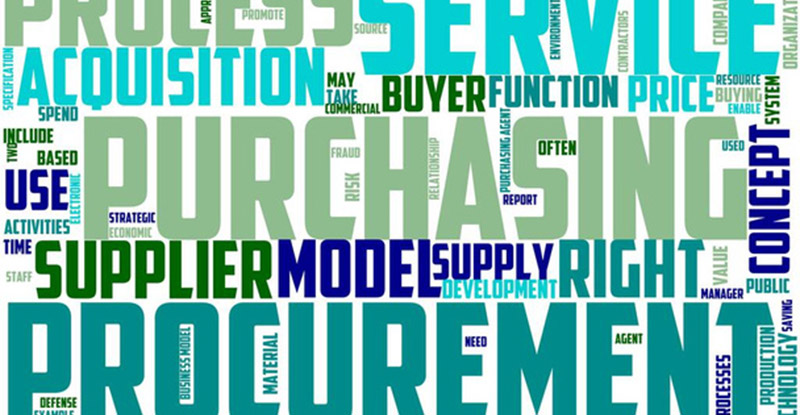Procurement vs Purchasing:
What’s The Difference?


Unleash the power duo! This guide explains procurement vs. purchasing in clear terms, helping businesses of all sizes achieve efficient sourcing, strategic partnerships, and cost savings.
Smooth business operations hinge on efficient acquisition of resources. Often, the terms “procurement” and “purchasing” are used interchangeably. However, these functions hold distinct roles within the supply chain.
Understanding these differences between procurement vs purchasing empowers businesses to optimize their spending and build a robust foundation for success. Let’s explore the key differences between procurement vs. purchasing, with their key distinctions and best practices for each.

Unlock the power of automated procurement with Artsyl’s OrderAction solution. Streamline vendor management, purchase order processing, and reconciliation to drive efficiency and cost savings.
“Purchasing” encompasses the process of acquiring goods or services for an organization, involving various stages from identifying needs to completing transactions and managing supplier relationships.
This multifaceted function plays a major role in ensuring a company’s operational efficiency and meeting its requirements while adhering to budget constraints.
Effective purchasing involves:
Purchasing also entails risk management, quality assurance, and maintaining compliance with regulations. Ultimately, purchasing contributes significantly to an organization’s success by optimizing costs, enhancing supply chain performance, and fostering sustainable growth.
Purchasing is the tactical arm of the procurement process focused on acquiring the goods and services a company needs to operate. It involves the day-to-day activities of finding, ordering, receiving, and paying for these resources.
YOU MAY ALSO BE INTERESTED: Sourcing vs Procurement: Key Differences, Processes, Tips
Here’s a breakdown of key aspects of purchasing:
In essence, purchasing ensures a smooth flow of necessary resources into the company by efficiently acquiring them at the best possible value.

Contact Us for an in-depth
product tour!
Here are some specific examples of purchasing activities within a company.
An office manager:
A restaurant chef:
A construction company:
These are just a few examples, and purchasing activities can vary a lot, depending on the industry and size of the company. But the core function of purchasing remains the same: acquiring the necessary goods and services at the best possible value to ensure smooth operations.
Simplify Purchasing with docAlpha
Automate document capture, extraction, and validation to accelerate purchase requisition processing with docAlpha by Artsyl. Experience seamless integration with your existing procurement systems.
Book a demo now
Procurement is the strategic process of acquiring goods, services, or works from external sources to support a company’s operations. It goes beyond simply buying things; it involves planning, sourcing, negotiation, and managing the entire acquisition lifecycle to ensure the best possible value for the company.
Procurement is strategic and long-term oriented. It focuses on identifying needs, planning, managing supplier relationships, and ensuring best overall value for the company. Procurement has a broader scope encompassing the entire acquisition lifecycle, from identifying needs to managing supplier relationships and post-purchase activities.
CONTINUE LEARNING: What is Procure to Pay (P2P): Definition and Use Cases
Here’s a breakdown of the key steps involved in the procurement process:
In general, procurement plays a role in managing ongoing contracts with suppliers. This may involve monitoring performance, ensuring adherence to terms, and fostering positive relationships with key vendors. As a process, it involves more complex decision-making, considering factors like cost, quality, supplier risk, and long-term strategic goals.
Accelerate Vendor Onboarding
With Artsyl’s OrderAction, vendor onboarding has never been easier. Simplify supplier registration, qualification, and contract management to expedite the procurement process.
Book a demo now
While both procurement and purchasing are crucial functions within the supply chain, they serve distinct purposes. Here’s a breakdown of their key differences:
Procurement is strategic and long-term oriented. Focuses on identifying needs, planning, managing supplier relationships, and ensuring best overall value for the company.
Purchasing is tactical and transactional. Executes the day-to-day activities of acquiring goods and services based on defined needs and specifications.
Procurement has broader scope encompassing the entire acquisition lifecycle, from identifying needs to managing supplier relationships and post-purchase activities.
Purchasing has narrower scope, primarily focused on executing specific purchase orders, handling communications with vendors regarding orders, and ensuring timely delivery and receipt of goods or services.
Procurement involves needs identification, supplier research and selection, contract negotiation, risk management, and building supplier relationships.
Purchasing involves issuing purchase orders, price comparison, managing vendor communications related to specific orders, receiving and inspecting goods, and initiating payments.
READ THIS NEXT: The Internet of Things and Automating Procure to Pay
Procurement involves more complex decision-making, considering factors like cost, quality, supplier risk, and long-term strategic goals.
Purchasing decisions are more focused on efficiency and adherence to established procurement guidelines and specifications.
Procurement often involves longer timelines for planning, negotiation, and contract management.
Purchasing activities tend to be faster paced, focused on PO matching and executing specific purchase orders within established timeframes.
In general, think of procurement as the architect, designing the blueprint for acquiring resources that align with the company’s needs and strategy. Purchasing then acts as the construction crew, efficiently executing the plan and making sure the necessary materials are acquired according to the blueprint.
When comparing procurement vs purchasing, procurement sets the strategic direction, while purchasing executes the tactical aspects of acquiring goods and services. Both functions work best when they collaborate effectively to ensure a smooth and efficient, AI-powered supply chain.
Enhance Purchase Order Processing
Experience faster and more accurate purchase order processing with Artsyl’s docAlpha intelligent process automation platform. Automate PO creation, approval routing, and delivery confirmation to reduce cycle times and improve visibility.
Book a demo now
Supplier relationship management (SRM) refers to the strategic approach of managing interactions and relationships with suppliers to optimize the value derived from these partnerships. It involves identifying key suppliers, establishing collaborative relationships, and aligning goals to drive mutual benefits and innovation.
SRM encompasses various activities such as supplier segmentation, performance evaluation, and continuous improvement initiatives to enhance supplier performance and mitigate risks. By fostering strong and transparent communication channels, organizations can effectively manage supplier relationships, negotiate favorable terms, and address challenges proactively.
SRM is critical for ensuring a reliable and sustainable supply chain, minimizing disruptions, and fostering long-term partnerships based on trust and mutual success.
Contract management involves the systematic administration of contracts throughout their lifecycle, from initial negotiation to termination or renewal. It encompasses activities such as contract drafting, negotiation, execution, monitoring, and compliance management to ensure that parties fulfill their obligations and achieve desired outcomes.
Effective contract management requires clear communication, documentation, and adherence to contractual terms and conditions to mitigate risks and maximize value. Organizations often utilize contract management software or platforms to centralize contract data, automate processes, and streamline contract lifecycle management.
By implementing robust contract management practices, organizations can minimize legal and financial risks, optimize vendor performance, and drive cost savings through improved contract visibility and control.
Strategic sourcing is a structured approach to procurement that focuses on identifying and selecting suppliers based on their ability to deliver goods and services that meet organizational needs and goals. It involves analyzing spend data, assessing market dynamics, and leveraging negotiation strategies to achieve optimal value and mitigate risks.

Strategic sourcing goes beyond traditional cost-cutting measures to consider factors such as supplier capabilities, quality, innovation, and sustainability. By aligning sourcing decisions with business objectives and market trends, organizations can drive competitive advantage, improve operational efficiency, and foster innovation across the supply chain.
The procurement process encompasses the series of steps and activities involved in acquiring goods and services to meet organizational needs. It typically includes requisitioning, sourcing, supplier selection, negotiation, contracting, ordering, receipt, payment, and performance evaluation.
The procurement process may vary depending on the organization’s size, industry, and specific requirements but generally follows a standardized workflow to ensure consistency and compliance.
Effective procurement processes aim to optimize cost, quality, delivery, and risk factors while adhering to legal and regulatory requirements. By streamlining procurement processes and leveraging technology such as e-procurement systems, organizations can enhance efficiency, transparency, and accountability throughout the procurement lifecycle.
Supplier diversity refers to the practice of actively seeking and engaging suppliers from a variety of demographic backgrounds, including minority-owned, women-owned, veteran-owned, LGBTQ+-owned, and small businesses. It involves promoting inclusivity and equal opportunities in procurement practices to support underrepresented groups and foster economic growth and innovation.
Supplier diversity initiatives aim to create a more inclusive supply chain ecosystem, enhance competition, and drive social and economic benefits for diverse communities. Organizations with robust supplier diversity programs can access a broader pool of suppliers, tap into new markets, and demonstrate their commitment to corporate social responsibility and diversity, equity, and inclusion (DEI) initiatives.
Through proactive outreach, partnerships, and supplier development initiatives, organizations can build a more resilient and sustainable supply chain while promoting diversity and equity in business relationships.
Improve Order Processing Efficiency
Transform your accounts receivable process with Artsyl’s OrderAction. Automate order data capture, validation, and approval workflows to accelerate purchasing and optimize procurement.
Book a demo now
Throughout this article, we’ve unpacked the crucial roles of procurement and purchasing, highlighting their unique strengths. Remember, these functions work best in tandem. Procurement sets the strategic direction, while purchasing executes the tactical aspects of acquiring goods and services.
To succeed, foster open communication and collaboration between procurement and purchasing teams. This ensures a seamless flow of information and informed decision-making.
Explore procurement and purchasing software solutions to automate tasks, streamline processes, and gain valuable data insights.
By understanding the distinct roles of procurement and purchasing, and fostering a collaborative environment, businesses can unlock significant cost savings, build stronger supplier relationships, and achieve a competitive edge. So, equip your supply chain with this powerful duo and watch your business thrive!